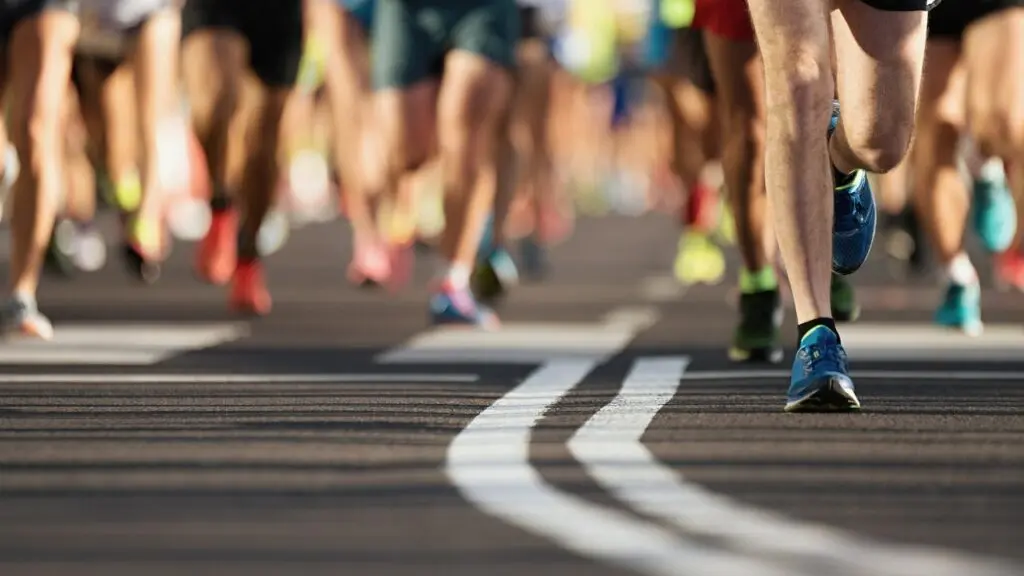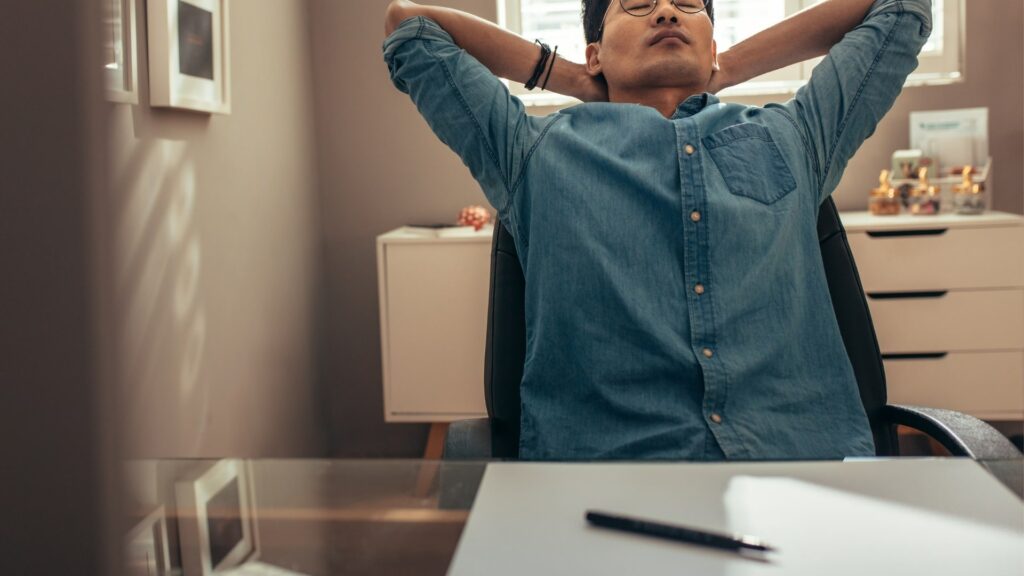
5 Ways To Avoid Back Pain After Running The Marathon
Running a marathon is no easy feat, for the average man or woman you’ll be doing between 55,000 and 65,000 steps during this event, let alone all the preparation. With each of these steps going through your spine as small impacts it is no wonder that your lower back could be feeling a little sore by the end of the race! For some, the back pain won’t appear until a day or two after. Given the huge toll that such an event takes on your body as a whole, and your lower back specifically, we thought we’d put together a list of 5 practices you can do in the minutes to days after you complete your marathon, to help reduce the likelihood and severity of any lower back pain after running the marathon.
A quick search for back pain after running the marathon will give rise to many bits of advice on how your muscles will be sore, while this will undoubtedly be true, it is not the priority when it comes to potential back ache or pain. Muscles heal very well and bounce back nicely, thanks to a great blood supply and daily movement. The spinal discs on the other hand have just taken a real beating as discussed, above, 60,000 times, with those impacts or steps, likely getting much heavier in the closing miles of the marathon. These spinal discs do not have the same ability to heal as quickly so doing the right things right away can really make a great deal of difference.
Decompress the discs in your lower back gently
There are two great stretches that you can do here to help take pressure directly off the discs in your back, particularly the L4,L5 disc and L5,S1 disc – these are the last two discs in your lower spine. Repeat these gentle stretches a couple of times a day for periods of 3 to 5 minutes at a time.
Bed decompression for pumping the lumbar spinal discs
The bed decompression is a great stretch to help take pressure off the lower back discs and create a pumping effect. As you lie with your head off the edge of the bed and body stretched out across it, using your upper arms off the side of the bed to press into the side as shown in the video above you will be able to create a gentle decompression of your lower back. This can sometimes give rise to an achey but pleasant feeling as you take pressure off the last discs in your lower back. You can hold the pump as you press your arms into the side of the bed for a few moments, then relax. This is similar to the sort of effect we generate when doing IDD Therapy spinal decompression in the clinic to take pressure off bulging or degenerated discs.
Video Resource: Watch or Read the Podcast episode on IDD Therapy For Disc Herniations
Towel stretch for supporting the natural spine curve
The towel stretch is one of the staple practices of the Back In Shape Program and is a fantastic one to combine after doing the bed decompression as lying over the rolled towel to support the natural backward bending curve of the lumbar spine, takes pressure off the spinal discs, as well as the muscles and ligaments of the lumbar spine. As your posture begins to fail as you fatigue through the marathon event, the lower back alignment will suffer, making those impacts we’ve discussed more pronounced and more forceful in the lower back. Being able to give the spine a chance to rest and “reset” in a good position taking all those muscles, ligaments and discs off pressure is a great relaxing tool that you can rely on to help minimise any back pain you do feel, or better yet, avoid it all together!
Video resource: Watch or Read the Podcast episode on the Towel Stretch For Low Back Pain
Prioritising the lumbar spine in the minutes and days following your marathon
Ultimately the two stretches above will be great to help you reduce the burden on your lower back and make recovery post marathon an awful lot easier! There are a few other resources that could really help you in this department and we’ve linked them below for you to check out. Firstly, a full video demonstration of 4 home decompression stretches to take pressure off your lower back, which includes the two strategies mentioned above, giving you step-by-step instructions as well as 2 additional safe stretching options for your lower back. The second resource is a link to a step-by-step tutorial on using inversion tables to help take pressure off the back, for those of you who have these tools they are an even better way to unload your lumbar spine, hips, knees and ankles too, which could have added benefits beyond the lower back after running a marathon!
Video resource: Step-by-step guide to spinal decompression stretches for back pain at home
Video resource Step-by-step guide to using inversion tables for lower back pain
Improving circulation in the lower back to help recovery and healing
Another great tool that you can use to help speed up the recovery process, and manage excessive inflammation in the lower back is hot and cold therapy, also known as contrast bathing. This is a great tool because it helps manage the excessive inflammation that can build up in the lower back as a result of the strain that developed during the marathon event. This can build up slowly over the period of hours to a day, and so getting into the lower back ahead of time with hot-cold therapy right away afterwards can reduce the degree to which this builds up. On top of that it will help optimize the recovery in the area of the lower back.
The simple truth is that if you’ve been preparing for the marathon for many weeks or months ahead of time, you’ve hopefully been giving your body time to adapt and strengthen as you gradually increase your mileage. So chances are you’re not going to cause any severe injury to the lower back, even if you are experiencing some bad lower back pain. One of the things we’ve seen clinically over the years and with members of the program, is how a minor back injury managed badly can often be worse for the individual than an “objectively” severe lower back injury.
With this in mind some swift application of contrast therapy to the lower spine over the week following the marathon will be a helpful tool for you.
Video resource: Step-by-step guide to contrast therapy for lower back pain
Self-massage to reduce stiffness in your hips
Stiffness that will inevitably develop in the legs after running a marathon is inevitably going to be present. Stiffness in the thighs and buttocks in particularly will always have a negative effect on the lower back as it means that in the movements of daily life, such as bending, getting dressed or getting in and out of a car, will involve less of the hips moving, and more of the lower back rounding and bending to accommodate. This will spell disaster for your lower back if it has been strained as a result of the marathon.
It is important therefore to have a strategy to help those muscles recover optimally post marathon. We recommend the use of massage guns as a great option to help you work on the muscles in a good way. This is much better than stretching as remember, those muscles (and tendons) have been seriously challenged during the marathon. Muscles heal faster than tendons as they have a much better blood supply for nutrition and waste drainage, just like we mentioned with reference to spinal discs earlier. Sometimes people pull too hard on the muscles when stretching and give rise to other issues. Using the massage guns works around this challenge and helps the muscles recover whilst not challenging the tendons too much!
For a full “follow along” video on how to use a massage gun on your lower body to speed up the recovery of your muscles after the marathon check out the video resource below. This routine takes about 10 minutes and could be done a couple of times per day.
Video resource: Follow along self-massage routine for your lower body
Back up option: Stretching if you must – avoid foam rollers and massage balls
We would really encourage the use of massage guns especially how cheap they are these days, foam rollers and massage balls are not good. The main reason is the positions that you need to adopt to use these tools, it’s not ideal for the lower back and it really is so much more effort. When massage guns can be purchased for under £100/$100 it really is worth investing in.
If you do not have one, then stretching of the hip flexors, hamstrings, gluteals and calves can work but you must avoid stretching too severely or too aggressively. Perhaps even considering some gentle dynamic stretching could well be a little easier and more relaxing than passive stretching after a marathon.
Stay active walking and moving post marathon
The final tip is that walking and staying mobile in the day’s post marathon will be a help. This could include going into the swimming pool just to keep your body moving with next to no effort or energy expenditure. This movement helps the body work better, and staying hydrated in combination with this will again help your body flush out all the waste products locked in the muscular system. The phrase, “motion is lotion” applies here and will help avoid your body seizing up quite so much in the period after your marathon event.
Combining the strategies for maximum benefit pre and post-marathon
Ultimately the best approach is to combine the strategies and tools above into daily practice in the days or even a couple of weeks post marathon. Certainly regardless of overt back pain, doing the above in the week after your marathon would be worthwhile. If there was some degree of lower back pain or sciatica, then continuing on for a little longer would be a good move.
To be quite honest, incorporating these strategies in the weeks and months leading up to your marathon would certainly be a helpful tool too, so if you are lucky enough to be coming across this article/podcast whilst you’re training for an event in a couple of weeks or months, do try to add these into your recovery routines to optimize your preparation, keeping your back as healthy as possible in the lead up to the marathon, wherever in the world you’re participating.
Final thoughts on running the marathon for your lower back
Ultimately, such events are taxing on the human body, you probably already know and feel this. With a little preparation and strategy we can reduce the likelihood of undesirable consequences, perform better and have more fun in the process. Hopefully these tools help you have your best marathon ever!
If you are unlucky enough to be struggling post marathon, or lower back injury has prevented you participating this time round, check out the “fixing back pain masterclass” for a free workshop that you can use to help start your rehabilitation approach, and of course, there is always membership to the full Back In Shape Program in which we help you fix your back pain from home and rebuild your back and core strength for the long term.









Responses